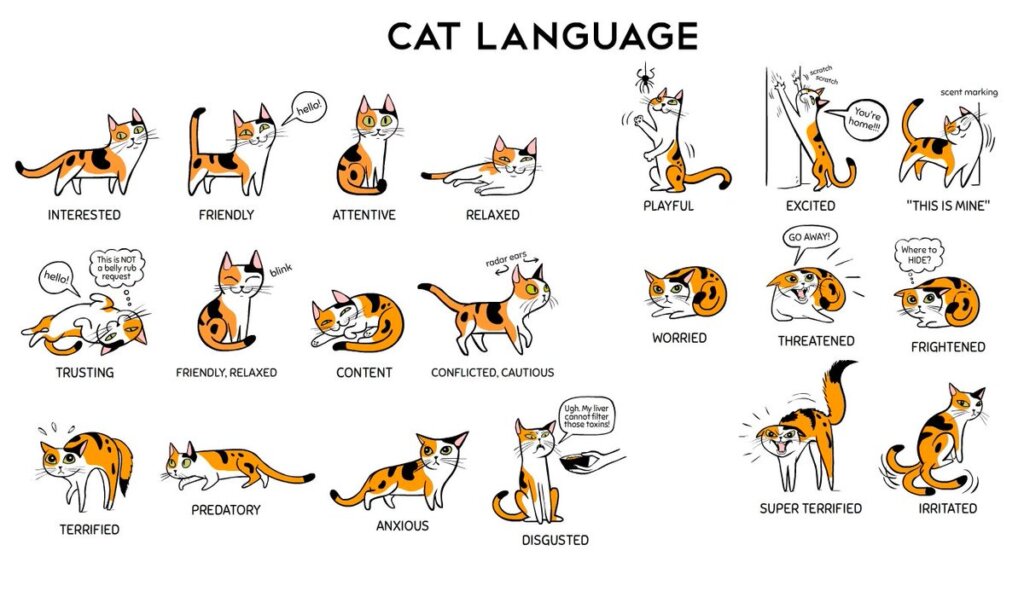Cats can sometimes seem like aliens from another planet! For those of us who share our homes with these strange creatures, it can seem impossible to understand them. They do however have some common, universal behaviours that can be decoded and I am here to help you decipher them!
Differentiating between happy and angry cats is usually pretty easy. A tail straight up in the air and ears perked forward means a happy kitty. Purring, while often indicating joy for our feline friends can also be a sign of stress so should be taken with a grain of salt. When cats are really angry or stressed, they can react by biting, scratching and hissing. But what about all of those in between emotions? Once we can recognize what they’re feeling, can we predict what they’ll do? Lets explore…

Check out this poster for some common behaviours and body postures that cats exhibit
| So why does your cat enjoy and even seek petting one minute then bite or scratch you when you oblige? A cat’s body language is much more subtle than our own when they are trying to express their emotions. When your cat “suddenly” reacts negatively to petting, she has usually given you signs that you weren’t doing it quite to her liking, they were just very subtle. Some of these signs include flicking of the tail, skin twitching, tongue flicking, and ear flattening. If she didn’t want to be petted anymore and just ran away, that would be a very clear sign that she was unhappy, but cats are usually much more cryptic. However, if she stuck around then that might mean she still wants contact, just in a different way. Many cats have “no-touch” zones on their bodies and will react strongly if these are trespassed upon. For example, my cat loves to be scratched around his face and head, but hates to have his belly touched (this is a common “no-touch” area for cats). When cats groom each other, they tend to focus on the head and neck, so it makes sense these areas are where petting is more acceptable. To better understand, or decode, your cat, I think we need to understand their basic needs. A primary need for cats is the need to hunt. You can help reduce stress in your cat’s life by instituting daily play sessions that mimic hunting. ave him chase a toy off and on for 15 minutes, then reward him with “prey” at the end by giving treats or a meal. Some cats respond better to a laser pointer than to toys, just make sure to reward the end of the session with food. *Some cats can begin to develop obsessive behaviours and will look for the laser even after play has ended. If this happens with your cat, don’t use the lasers to play.* There are many cat toys available to help with simulated hunting. I like the No Bowl feeding system, but there are many options out there. If your cat doesn’t play easily, don’t give up! Continue to try different toys, you can even get some great ideas for DIY cat toys on websites like Pinterest. While cats may not be as easy to read as our canine companions, they make a lovely addition to most households. Understanding what they are feeling and thinking can go a long way to making sure that everyone is getting the most out of the relationship. |








